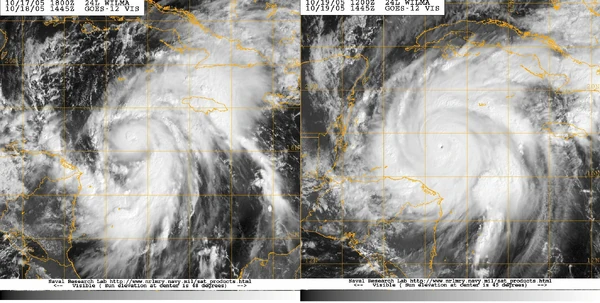
In one of the more bizarre RI cases, Wilma of 2005 intensified from a 70 mph tropical storm into the Atlantic's strongest recorded hurricane in 1 day.
Rapid intensification, also known as RI, is roughly defined by the NHC as an "increase in the maximum sustained winds of a tropical cyclone of at least 30 kt in a 24-hour period." While it is commonly believed that rapid intensification only occurs with more stronger storms, rapid intensification can occur regardless of the storm strength. Rapid intensification is often coupled with a rapid decrease in a storm's minimum pressure, and thus RI is also known as rapid deepening. However, the NHC maintains its own definition of rapid deepening, which would be a drop of 1.75 mbar/hour or 42 mbars in a day.
Necessary conditions[]
While the physics behind rapid intensification is not fully understood, from past occurrences, it appears that rapid intensification only occurs in the conditions that sustain a strong tropical cyclone. The surface sea temperature should be very warm, and anomalies such as wind shear and dry air would be at a minimum. However, the occurrence and timing of rapid intensification remains nearly unpredictable.
Occurance[]
In a 2003 study by scientists John Kaplan and Mark DeMaria, it was found that rapid intensification is the 95th percentile of all 24 hour tropical cyclone intensity changes that occur over water. Tropical systems in the Atlantic that recorded a rapid intensification period with a 30 kt or more intensity increase have been recorded to occur anywhere in the Atlantic, but rapid intensification periods with a 35 kt or more intensity increase have been recorded to be almost exclusive to the southern parts of the North Atlantic basin, occuring in the Caribbean Sea and the Gulf of Mexico. Hurricane Dorian of 2019 underwent extreme rapid intinsification, going from a category 3 to a 185MPH category 5.
